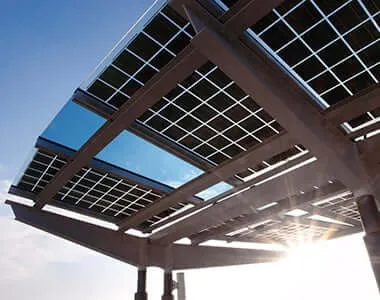bifacial solar panel vs monofacial
Bifacial Solar Panels vs. Monofacial Solar Panels A Comprehensive Comparison
As the world steps towards renewable energy sources, solar power remains at the forefront of the shift. Among the various innovations in solar technology, bifacial and monofacial solar panels have emerged as popular choices for both residential and commercial installations. Each panel type comes with its advantages and disadvantages, making it essential for consumers and businesses to understand their options thoroughly.
Understanding the Basics
Monofacial solar panels are designed to capture sunlight on one side. They are the most commonly used type of solar panel and are typically easier to install and manufacture. Bifacial solar panels, on the other hand, are capable of absorbing sunlight from both sides, increasing their potential energy output. This ability allows bifacial modules to harness reflected sunlight off surfaces such as water, soil, and building materials.
Efficiency Comparison
One of the primary differences between bifacial and monofacial solar panels is their efficiency. Bifacial panels can produce anywhere from 10% to 30% more energy compared to their monofacial counterparts, depending on the installation setup and environmental conditions. This increased efficiency stems from their dual-sided design, allowing them to utilize both direct sunlight and reflected light.
However, achieving this peak efficiency relies heavily on the installation conditions. For optimal performance, bifacial panels require a proper setup that enhances their capacity to catch reflected light. This means that the installation surface—such as white gravel, concrete, or light-colored rooftops—can significantly impact their overall output.
Cost Considerations
bifacial solar panel vs monofacial

When comparing the two types of panels, cost becomes a critical factor. Monofacial panels generally have a lower upfront cost, making them a more accessible option for many consumers. Bifacial panels, while potentially more costly initially, can yield higher energy production, which may justify the investment over time.
It’s essential to consider not just the cost of the panels themselves, but also the potential savings from increased energy output. For consumers aiming for long-term sustainability and energy efficiency, bifacial panels may provide a better return on investment.
Installation and Maintenance
The installation and maintenance of bifacial panels can also be more complex than monofacial panels. Due to their two-sided structure, bifacial panels may require more careful alignment and positioning to maximize their energy absorption capacity. This necessity can lead to increased installation costs and challenges.
In contrast, monofacial panels are generally simpler to install and maintain, making them a preferable choice for those seeking a hassle-free solar solution. They are also lighter, which can make roof installation easier and less taxing on building structures.
Conclusion
In the debate between bifacial and monofacial solar panels, the decision ultimately depends on individual needs and circumstances. While bifacial panels offer enhanced efficiency and energy production potential, they come with higher costs and installation complexities. Monofacial panels, being simpler and cheaper, remain a reliable option for many consumers.
Ultimately, prospective buyers should evaluate their specific energy needs, budget constraints, and installation environment before making a decision. As solar technology advances and prices continue to fluctuate, staying informed will empower consumers to choose the right solar solution for their circumstances.
-
String Solar Inverter: The High-Efficiency Solution for Smart Solar EnergyNewsJul.14,2025
-
Revolutionizing Rooftop Energy with the Power of the Micro Solar InverterNewsJul.14,2025
-
Power Independence with Smart Off Grid Solar Inverter SolutionsNewsJul.14,2025
-
On Grid Solar Inverter: Powering the Future with Smart Grid IntegrationNewsJul.14,2025
-
Monocrystalline Solar Panels: High-Efficiency Power for the Future of Clean EnergyNewsJul.14,2025
-
Bifacial Solar Panel: A Smarter Investment for Next-Generation Energy SystemsNewsJul.14,2025







